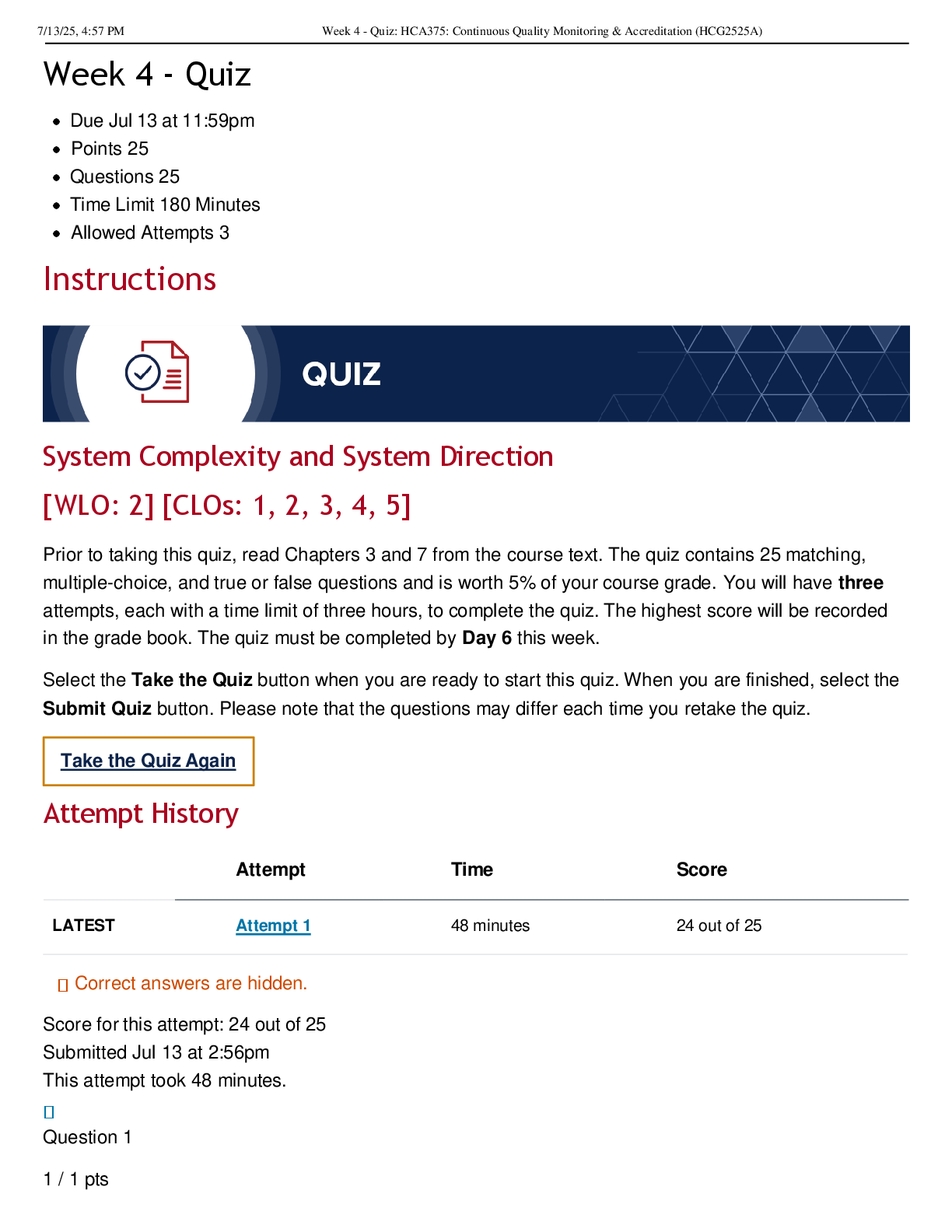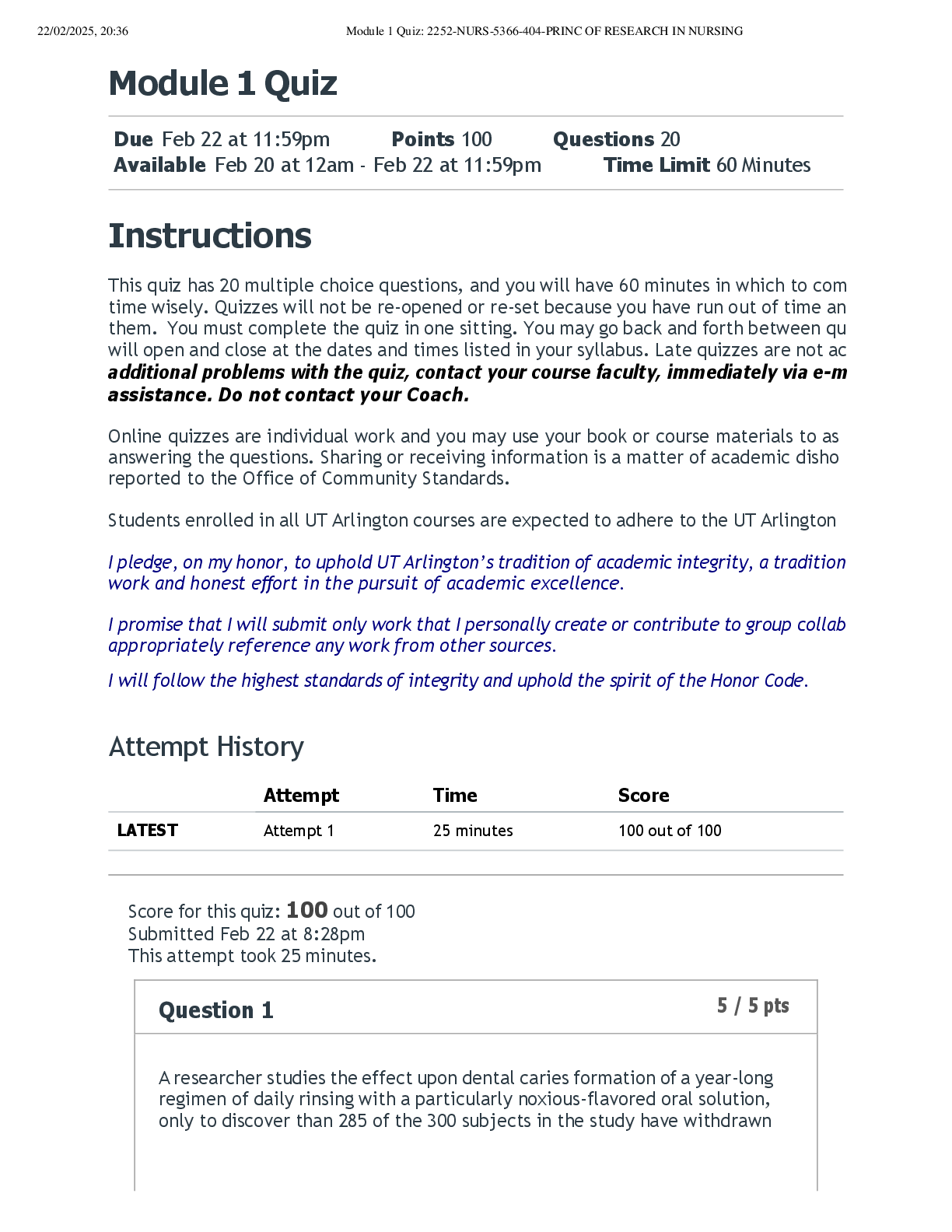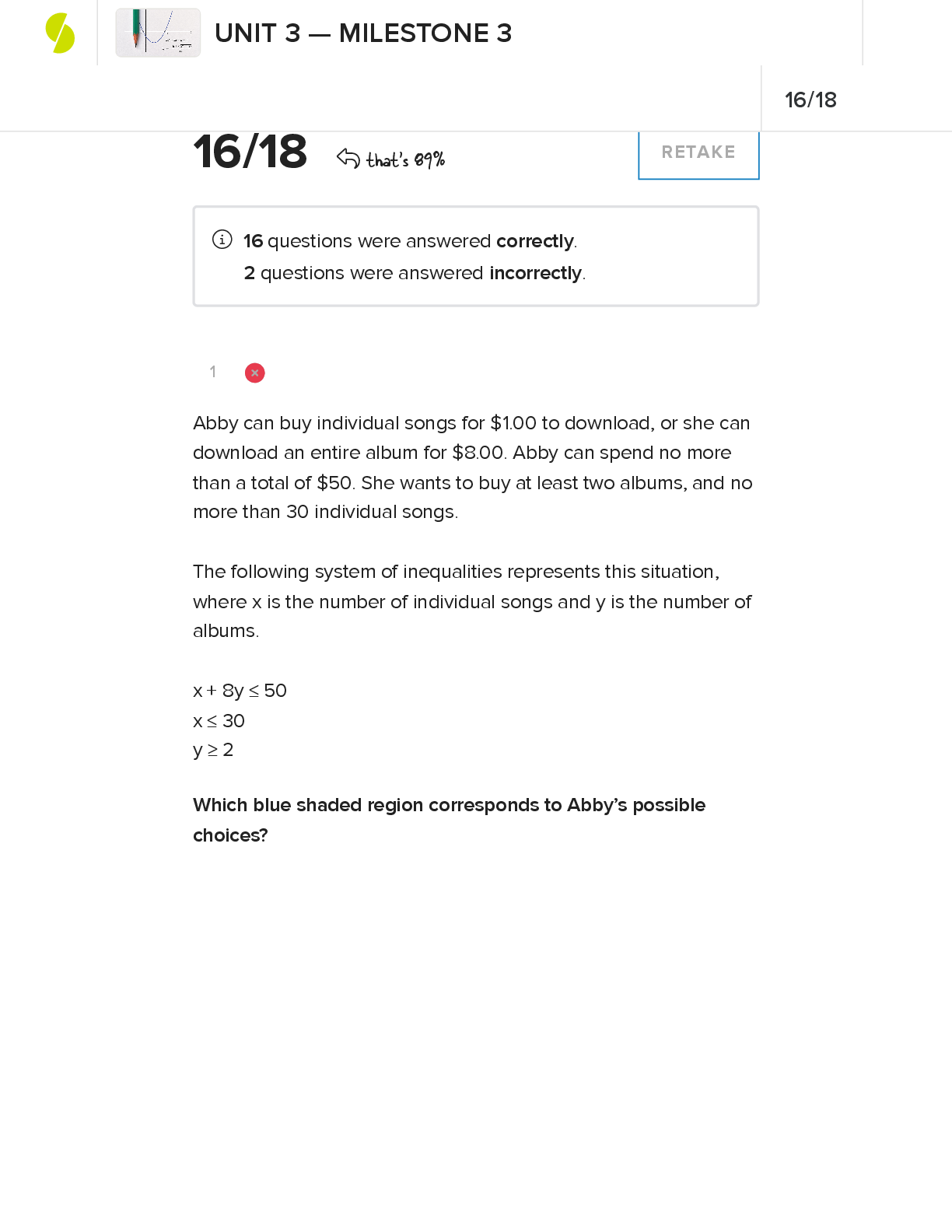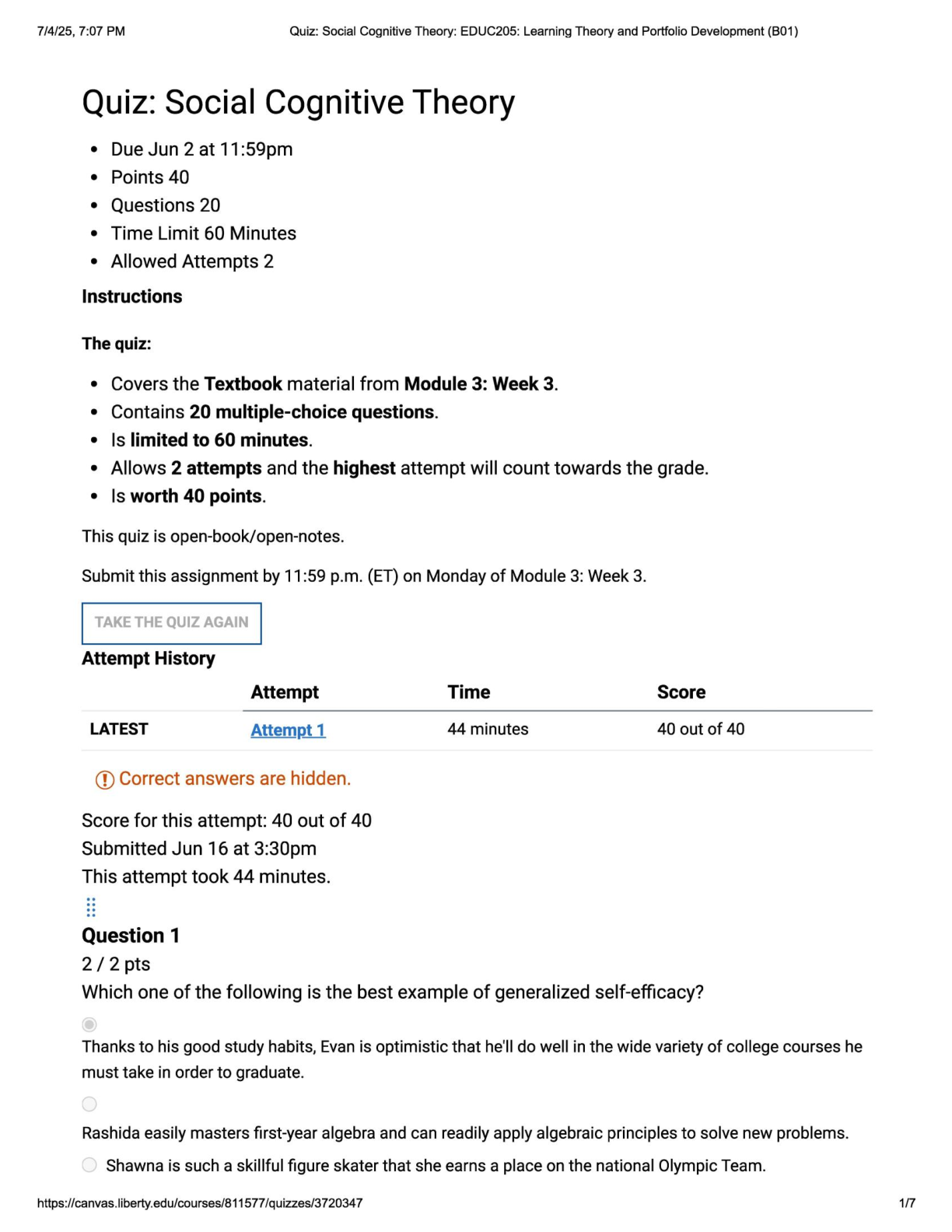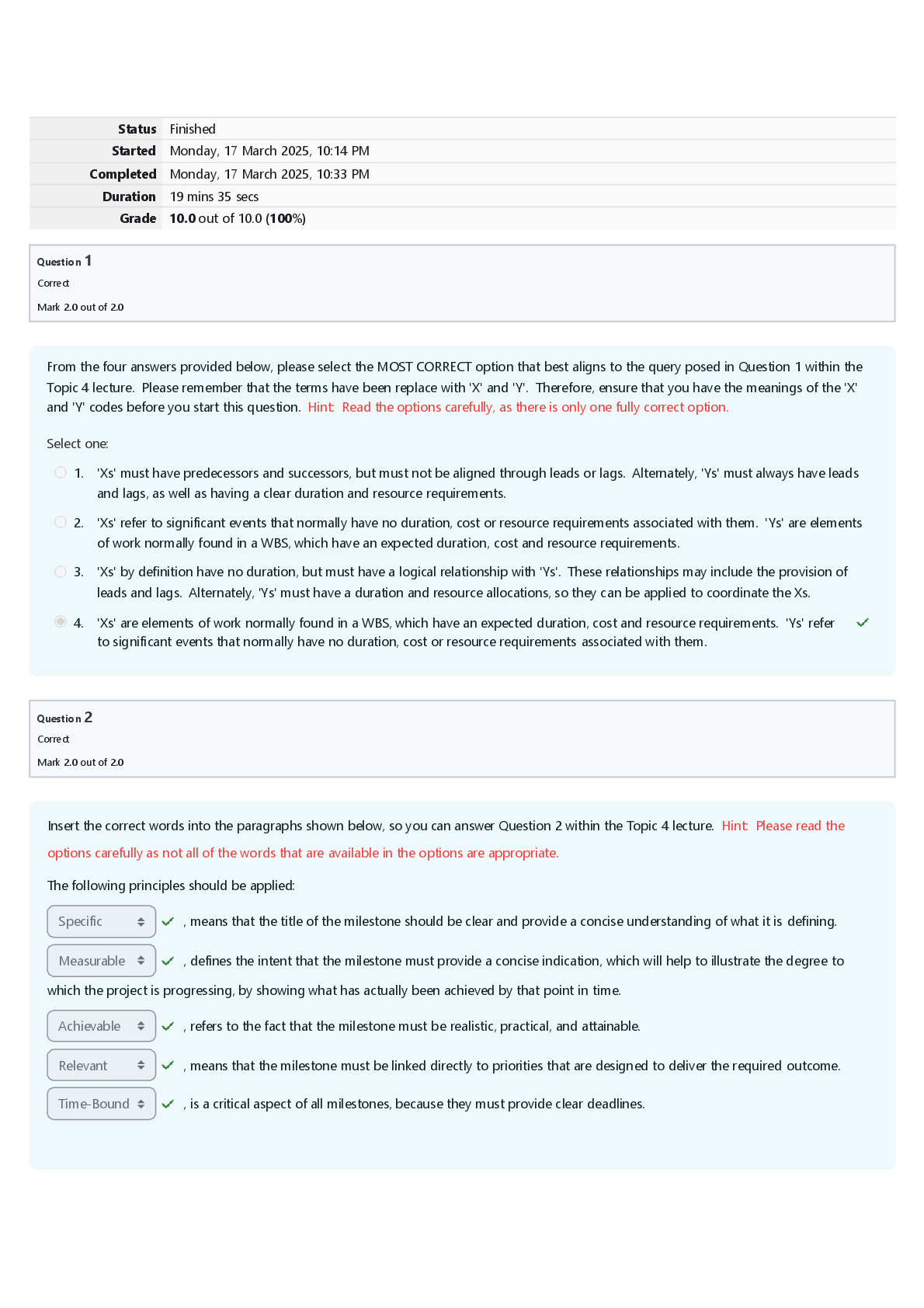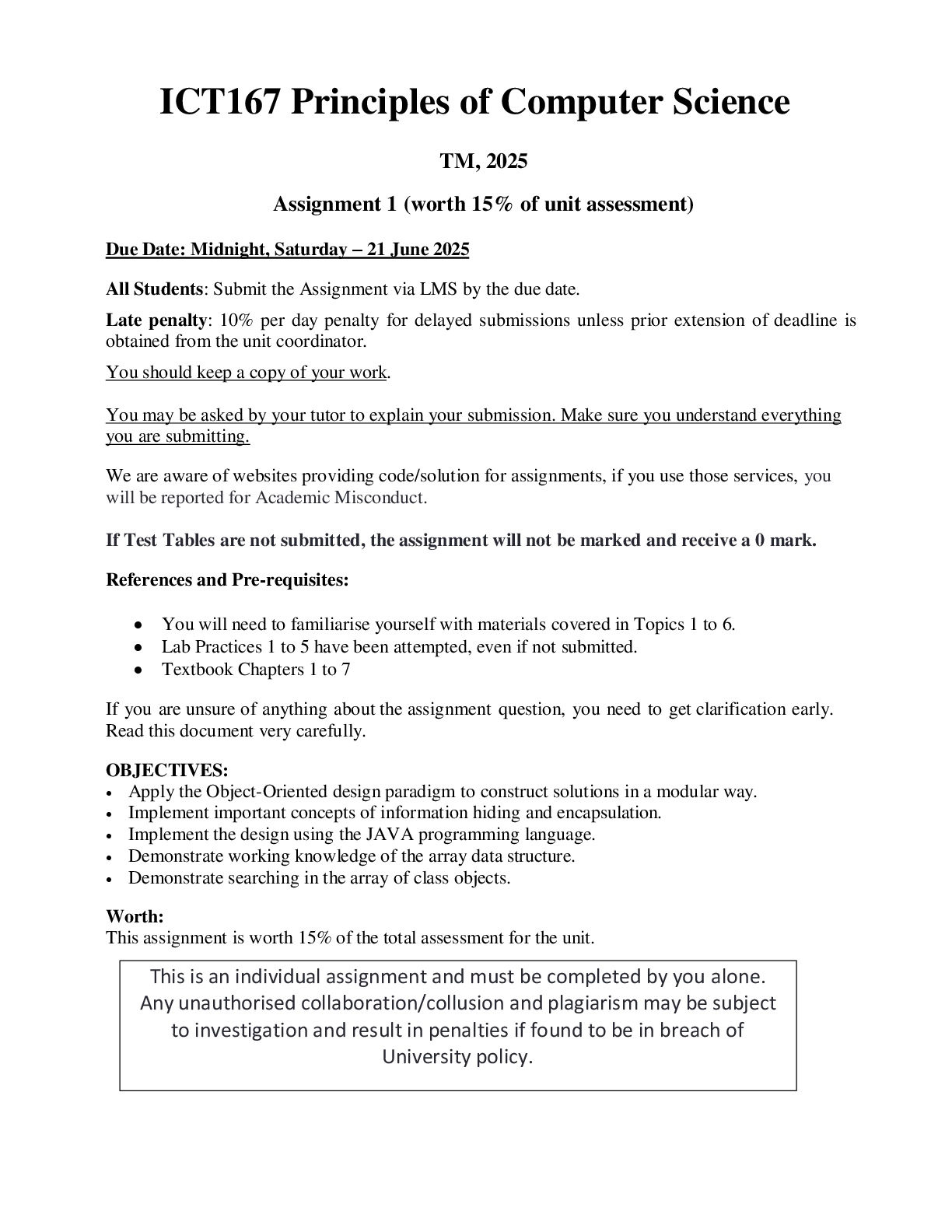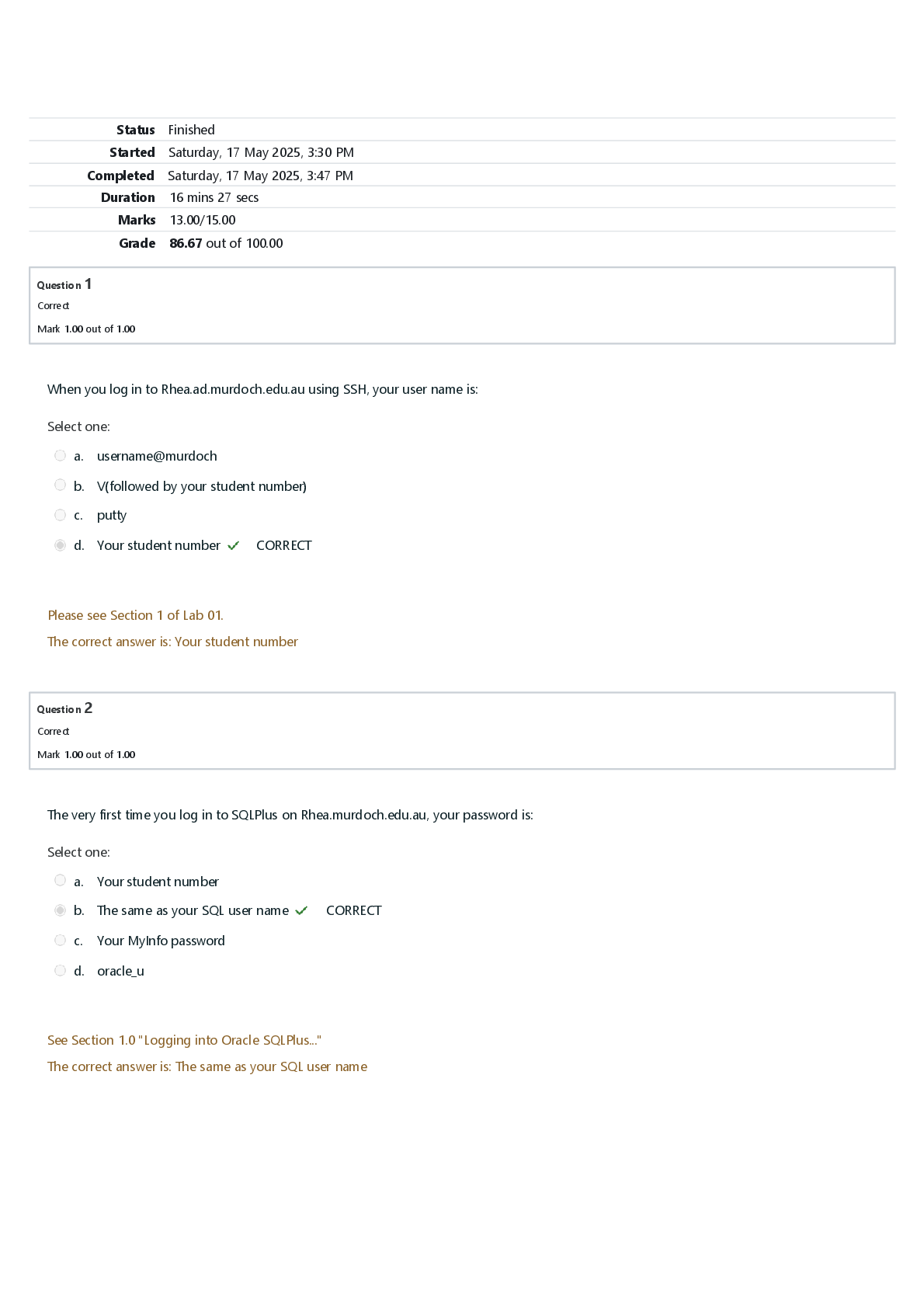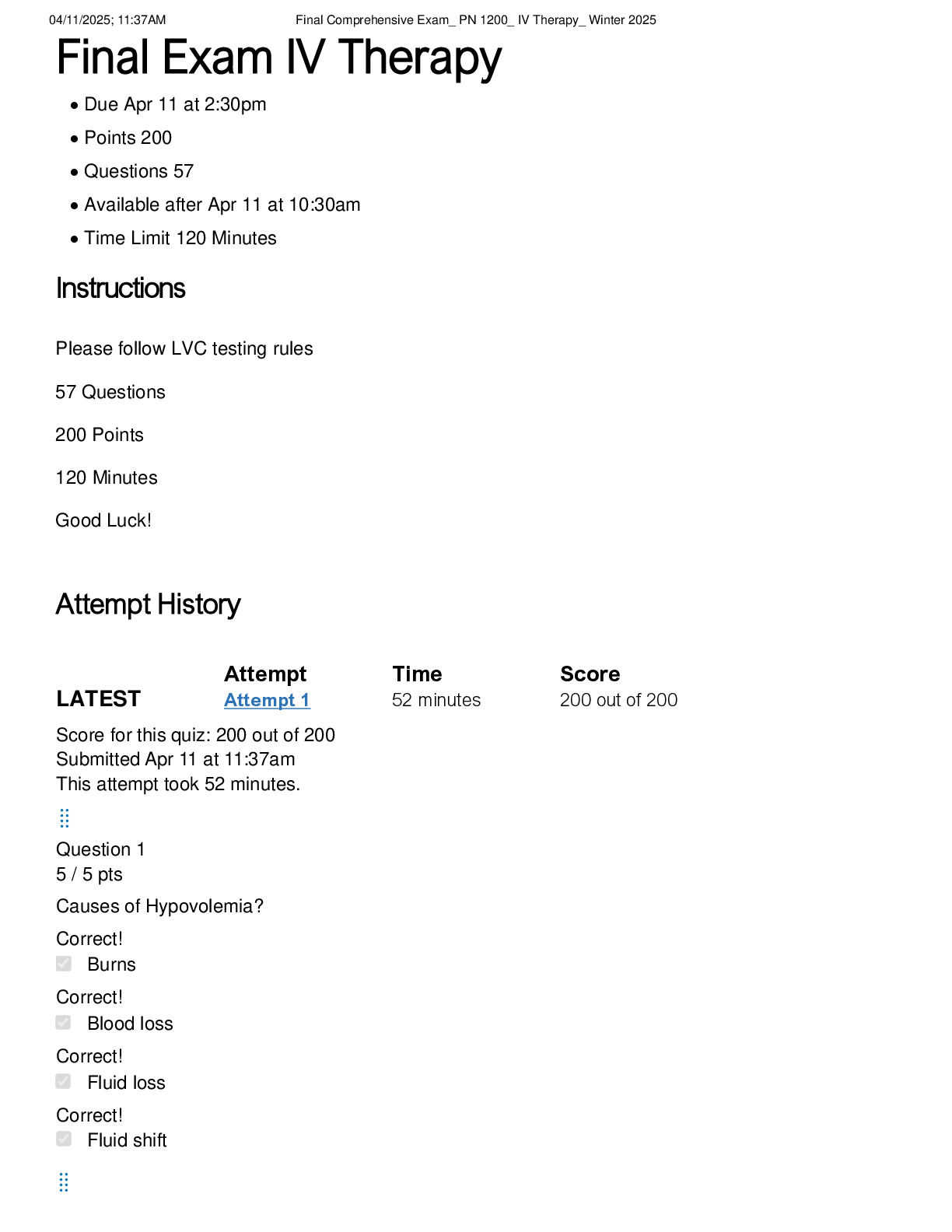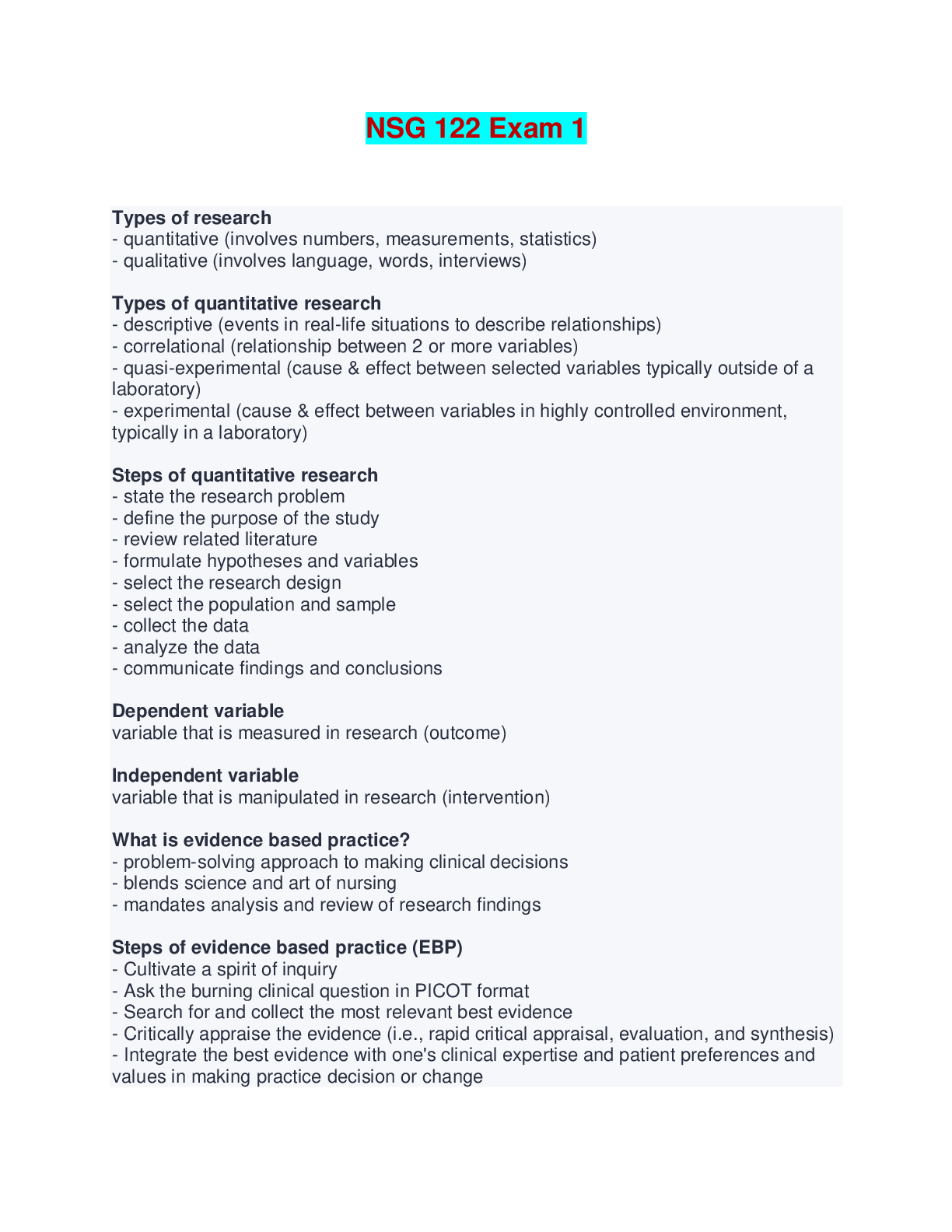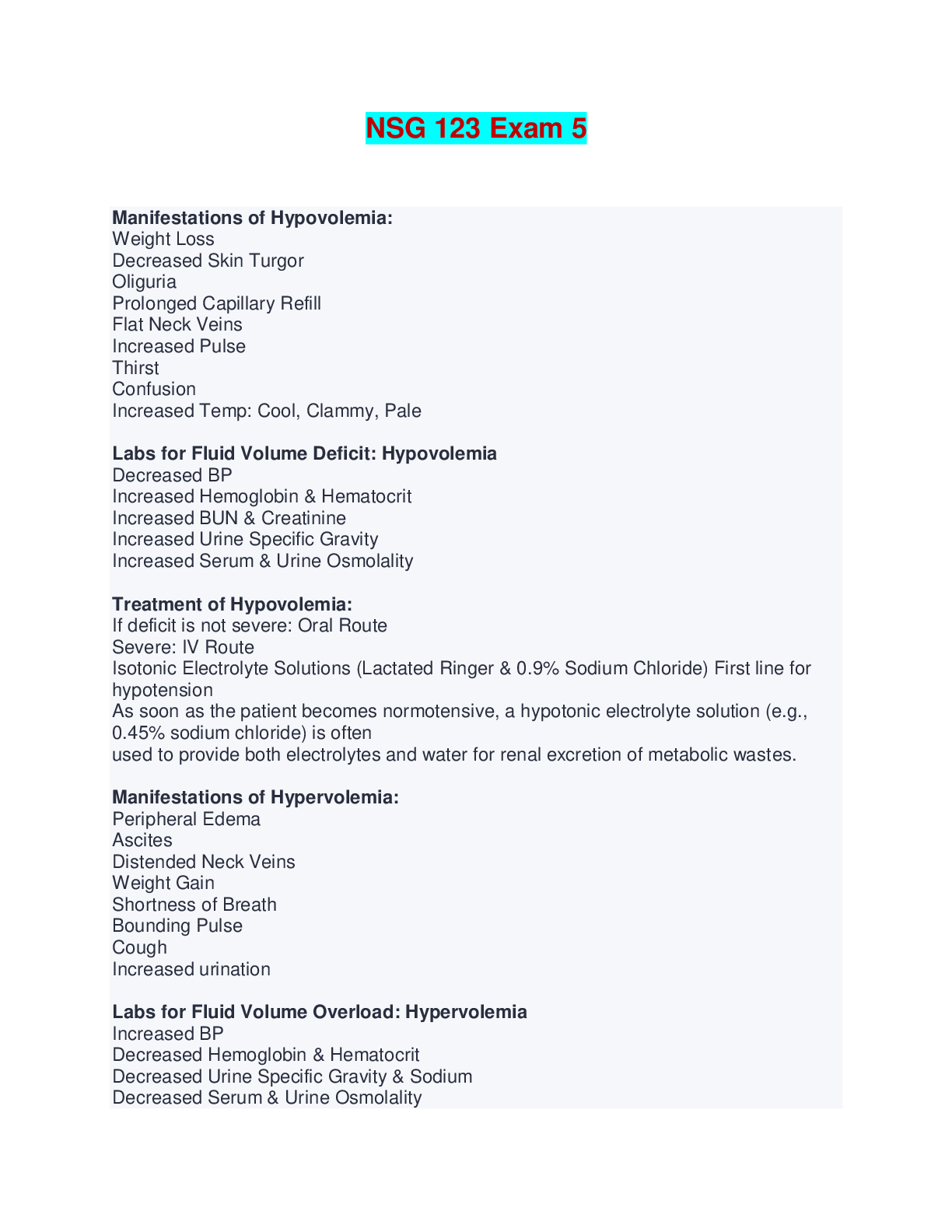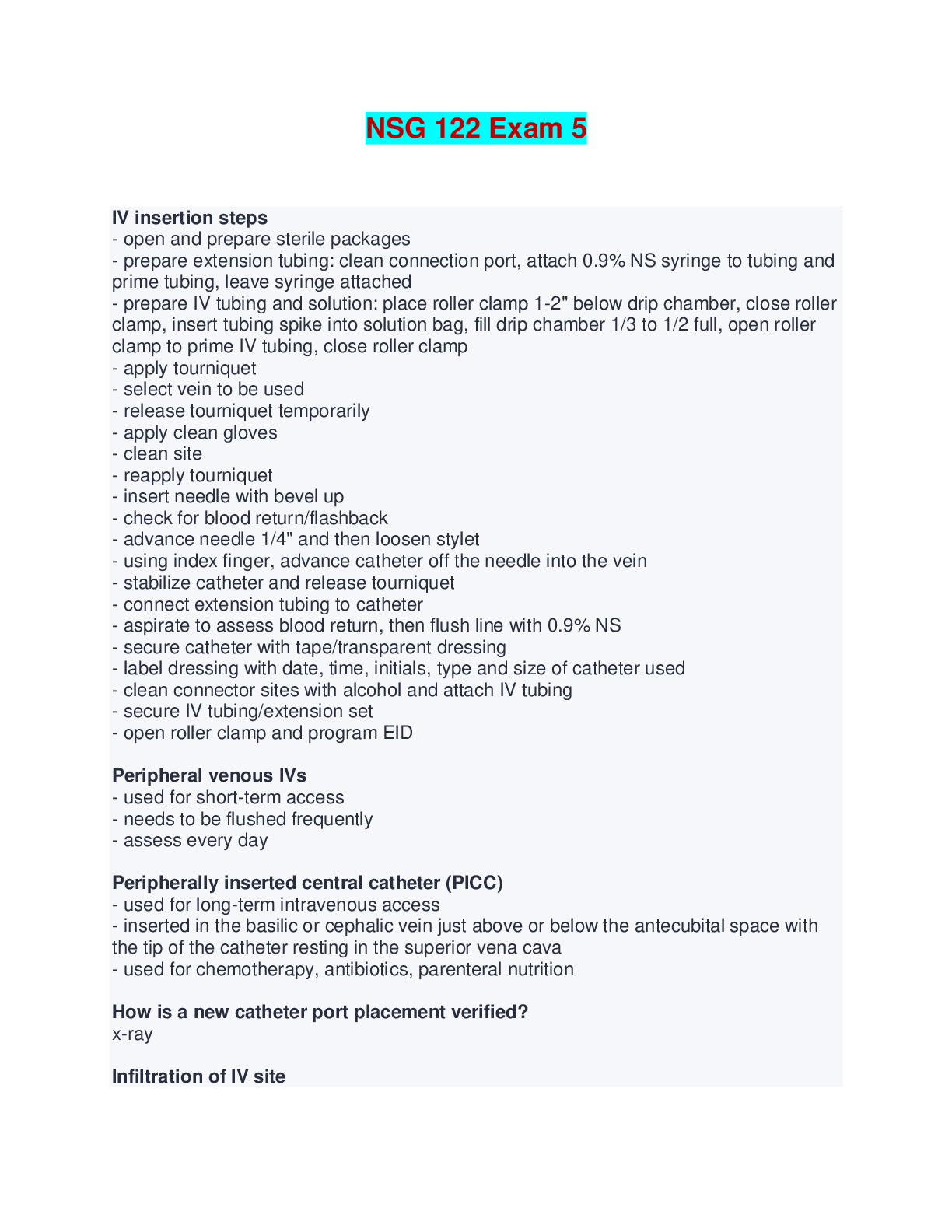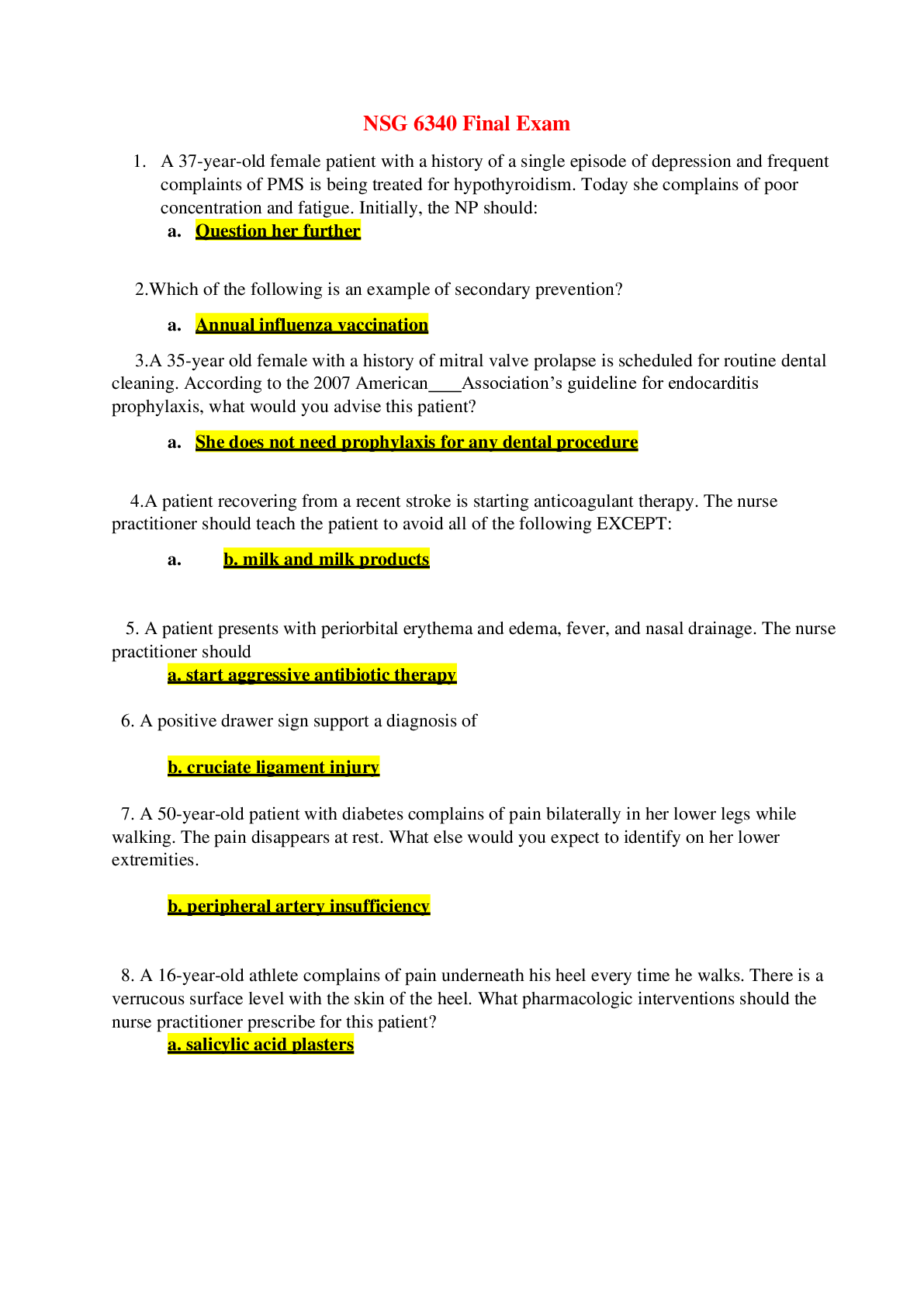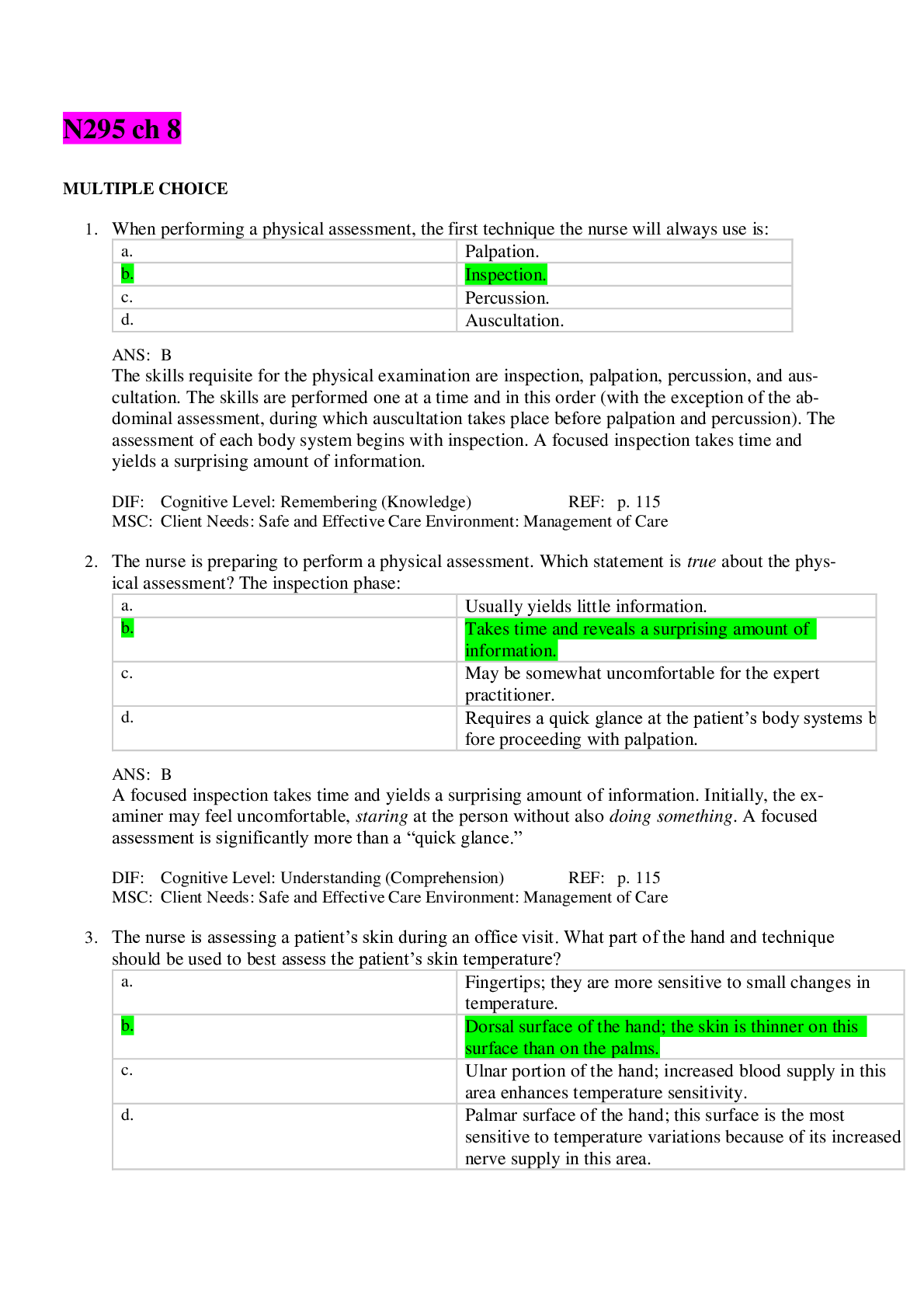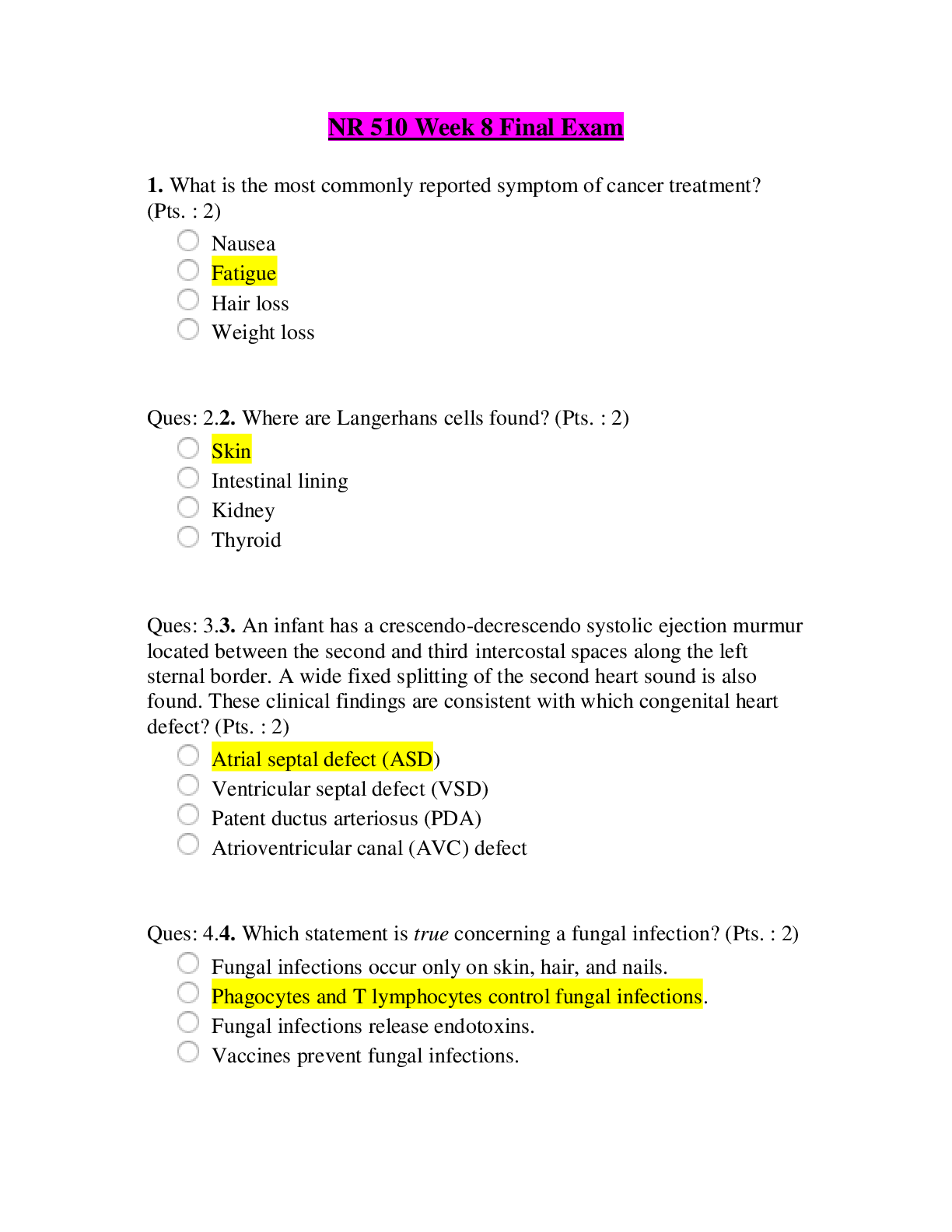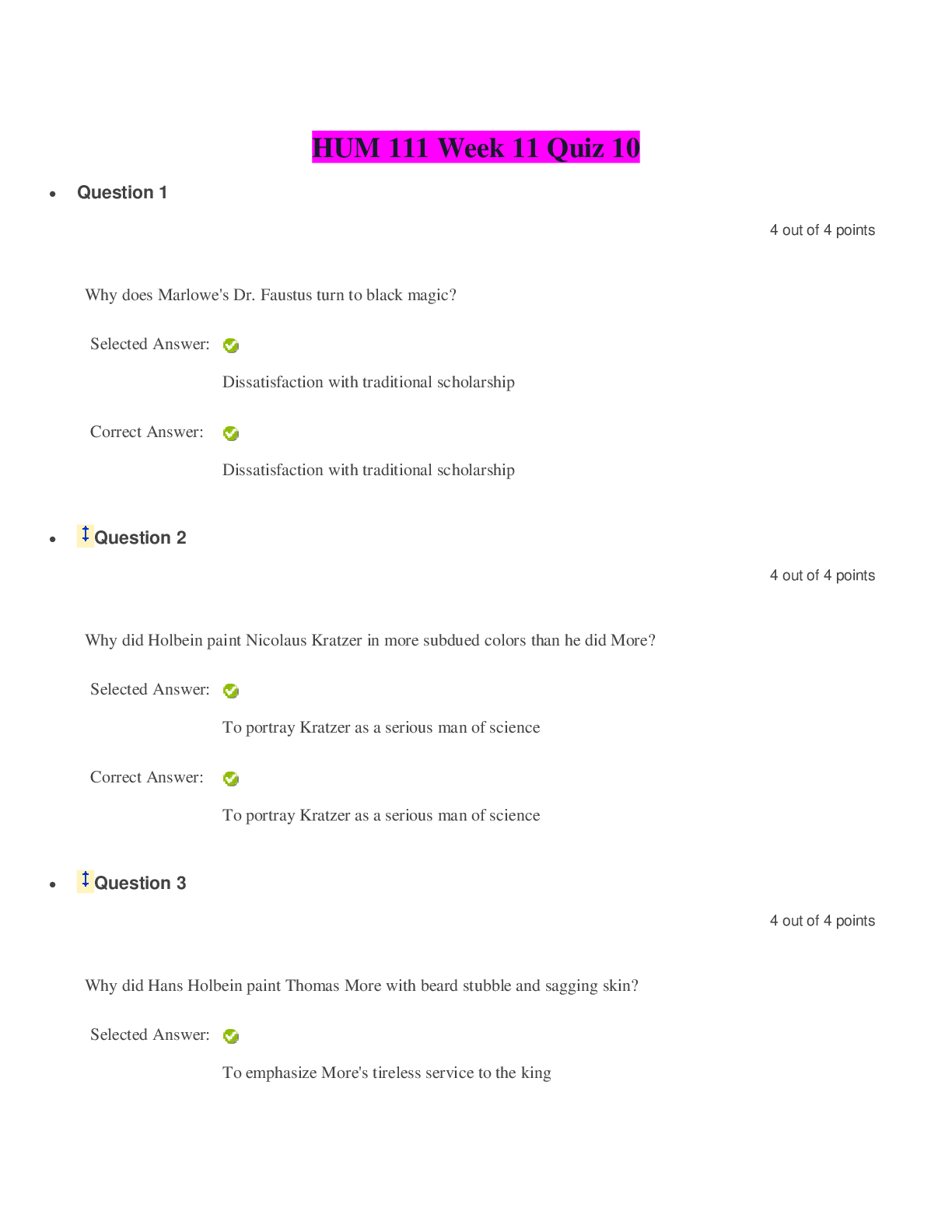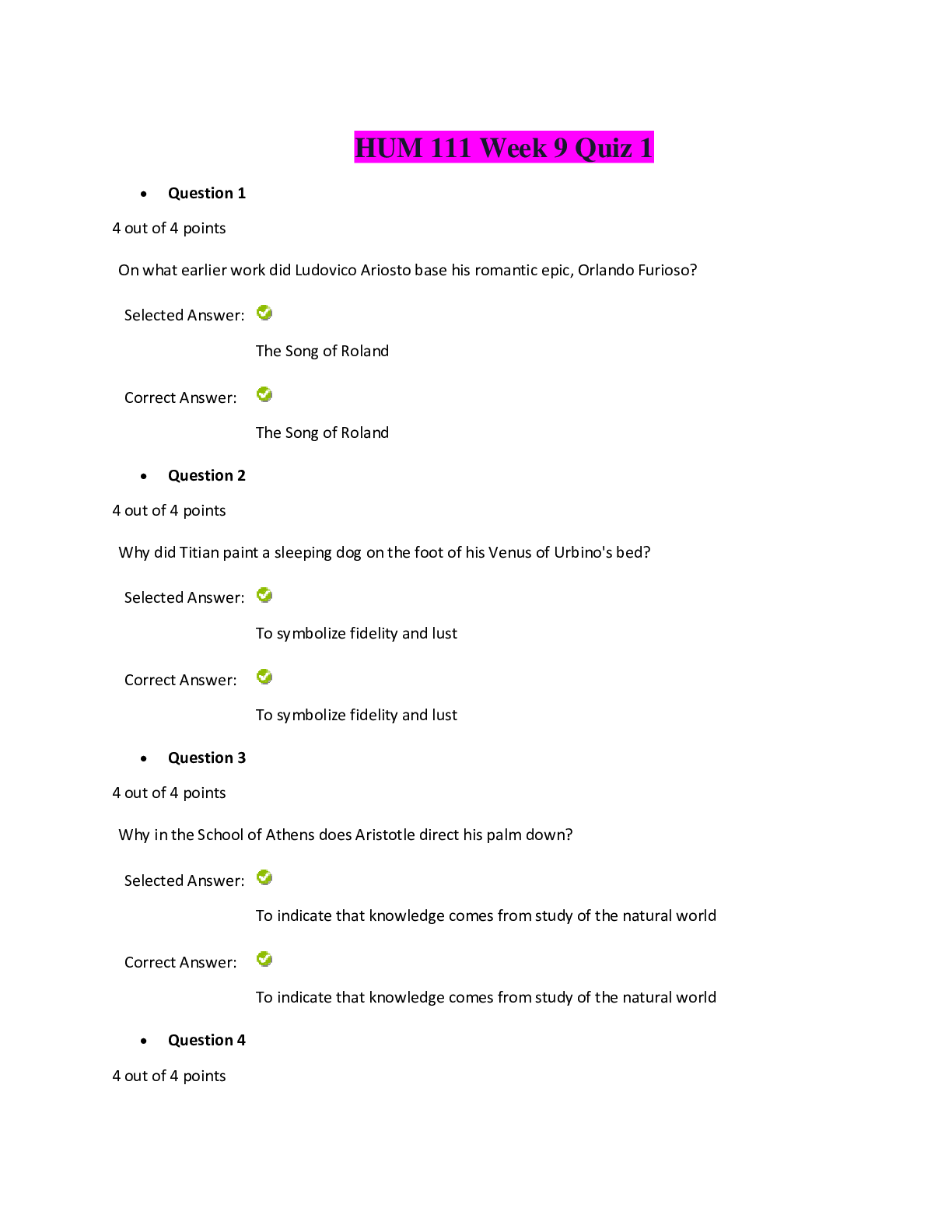c9 CNURSING 295 - 100% Correct Questions and Answers - Rated A
Document Content and Description Below
N295 ch 9 MULTIPLE CHOICE 1. The nurse is performing a general survey. Which action is a component of the general survey? 2. When measuring a patient’s weight, the nurse is aware of which... of these guidelines? 3. A patient’s weekly blood pressure readings for 2 months have ranged between 124/84 mm Hg and 136/88 mm Hg, with an average reading of 126/86 mm Hg. The nurse knows that this blood pressure falls within which blood pressure category? 4. During an examination of a child, the nurse considers that physical growth is the best index of a child’s: 5. A 1-month-old infant has a head measurement of 34 cm and has a chest circumference of 32 cm. Based on the interpretation of these findings, the nurse would: 6. The nurse is assessing an 80-year-old male patient. Which assessment findings would be considered normal? 7. The nurse should measure rectal temperatures in which of these patients? 8. The nurse is preparing to measure the length, weight, chest, and head circumference of a 6-month-old infant. Which measurement technique is correct? 9. The nurse knows that one advantage of the tympanic membrane thermometer (TMT) is that: 10. When assessing an older adult, which vital sign changes occur with aging? 11. The nurse is examining a patient who is complaining of “feeling cold.” Which is a mechanism of heat loss in the body? 12. When measuring a patient’s body temperature, the nurse keeps in mind that body temperature is influenced by: 13. When evaluating the temperature of older adults, the nurse should remember which aspect about an older adult’s body temperature? 14. A 60-year-old male patient has been treated for pneumonia for the past 6 weeks. He is seen today in the clinic for an “unexplained” weight loss of 10 pounds over the last 6 weeks. The nurse knows that: 15. When assessing a 75-year-old patient who has asthma, the nurse notes that he assumes a tripod position, leaning forward with arms braced on the chair. On the basis of this observation, the nurse should: 16. Which of these actions illustrates the correct technique the nurse should use when assessing oral temperature with a mercury thermometer? 17. The nurse is taking temperatures in a clinic with a TMT. Which statement is true regarding use of the TMT? 18. To assess a rectal temperature accurately in an adult, the nurse would: 19. Which technique is correct when the nurse is assessing the radial pulse of a patient? The pulse is counted for: 20. When assessing a patient’s pulse, the nurse should also notice which of these characteristics? 21. When assessing the pulse of a 6-year-old boy, the nurse notices that his heart rate varies with his respiratory cycle, speeding up at the peak of inspiration and slowing to normal with expiration. The nurse’s next action would be to: 22. When assessing the force, or strength, of a pulse, the nurse recalls that the pulse: 23. The nurse is assessing the vital signs of a 20-year-old male marathon runner and documents the following vital signs: temperature–36° C; pulse–48 beats per minute; respirations–14 breaths per minute; blood pressure–104/68 mm Hg. Which statement is true concerning these results? 24. The nurse is assessing the vital signs of a 3-year-old patient who appears to have an irregular respiratory pattern. How should the nurse assess this child’s respirations? 25. A patient’s blood pressure is 118/82 mm Hg. He asks the nurse, “What do the numbers mean?” The nurse’s best reply is: 26. While measuring a patient’s blood pressure, the nurse recalls that certain factors, such as __________, help determine blood pressure. 27. A nurse is helping at a health fair at a local mall. When taking blood pressures on a variety of people, the nurse keeps in mind that: 28. The nurse notices a colleague is preparing to check the blood pressure of a patient who is obese by using a standard-sized blood pressure cuff. The nurse should expect the reading to: 29. A student is late for his appointment and has rushed across campus to the health clinic. The nurse should: 30. The nurse will perform a palpated pressure before auscultating blood pressure. The reason for this is to: 31. The nurse is taking an initial blood pressure reading on a 72-year-old patient with documented hypertension. How should the nurse proceed? 32. The nurse has collected the following information on a patient: palpated blood pressure–180 mm Hg; auscultated blood pressure–170/100 mm Hg; apical pulse–60 beats per minute; radial pulse–70 beats per minute. What is the patient’s pulse pressure? 33. When auscultating the blood pressure of a 25-year-old patient, the nurse notices the phase I Korotkoff sounds begin at 200 mm Hg. At 100 mm Hg, the Korotkoff sounds muffle. At 92 mm Hg, the Korotkoff sounds disappear. How should the nurse record this patient’s blood pressure? 34. A patient is seen in the clinic for complaints of “fainting episodes that started last week.” How should the nurse proceed with the examination? 35. A 70-year-old man has a blood pressure of 150/90 mm Hg in a lying position, 130/80 mm Hg in a sitting position, and 100/60 mm Hg in a standing position. How should the nurse evaluate these findings? 36. The nurse is helping another nurse to take a blood pressure reading on a patient’s thigh. Which action is correct regarding thigh pressure? 37. The nurse is preparing to measure the vital signs of a 6-month-old infant. Which action by the nurse is correct? 38. A 4-month-old child is at the clinic for a well-baby check-up and immunizations. Which of these actions is most appropriate when the nurse is assessing an infant’s vital signs? 39. The nurse is conducting a health fair for older adults. Which statement is true regarding vital sign measurements in aging adults? 40. In a patient with acromegaly, the nurse will expect to discover which assessment findings? 41. The nurse is performing a general survey of a patient. Which finding is considered normal? 42. The nurse is assessing children in a pediatric clinic. Which statement is true regarding the measurement of blood pressure in children? 43. What type of blood pressure measurement error is most likely to occur if the nurse does not check for the presence of an auscultatory gap? 44. When considering the concepts related to blood pressure, the nurse knows that the concept of mean arterial pressure (MAP) is best described by which statement? 45. A 75-year-old man with a history of hypertension was recently changed to a new antihyperten-sive drug. He reports feeling dizzy at times. How should the nurse evaluate his blood pressure? 46. Which of these specific measurements is the best index of a child’s general health? 47. The nurse is assessing an 8-year-old child whose growth rate measures below the third percentile for a child his age. He appears significantly younger than his stated age and is chubby with in-fantile facial features. Which condition does this child have? 48. The nurse is counting an infant’s respirations. Which technique is correct? 49. When checking for proper blood pressure cuff size, which guideline is correct? 50. During an examination, the nurse notices that a female patient has a round “moon” face, central trunk obesity, and a cervical hump. Her skin is fragile with bruises. The nurse determines that the patient has which condition? MULTIPLE RESPONSE 1. While measuring a patient’s blood pressure, the nurse uses the proper technique to obtain an accurate reading. Which of these situations will result in a falsely high blood pressure reading? Select all that apply. SHORT ANSWER 1. What is the pulse pressure for a patient whose blood pressure is 158/96 mm Hg and whose pulse rate is 72 beats per minute? [Show More]
Last updated: 2 years ago
Preview 1 out of 18 pages
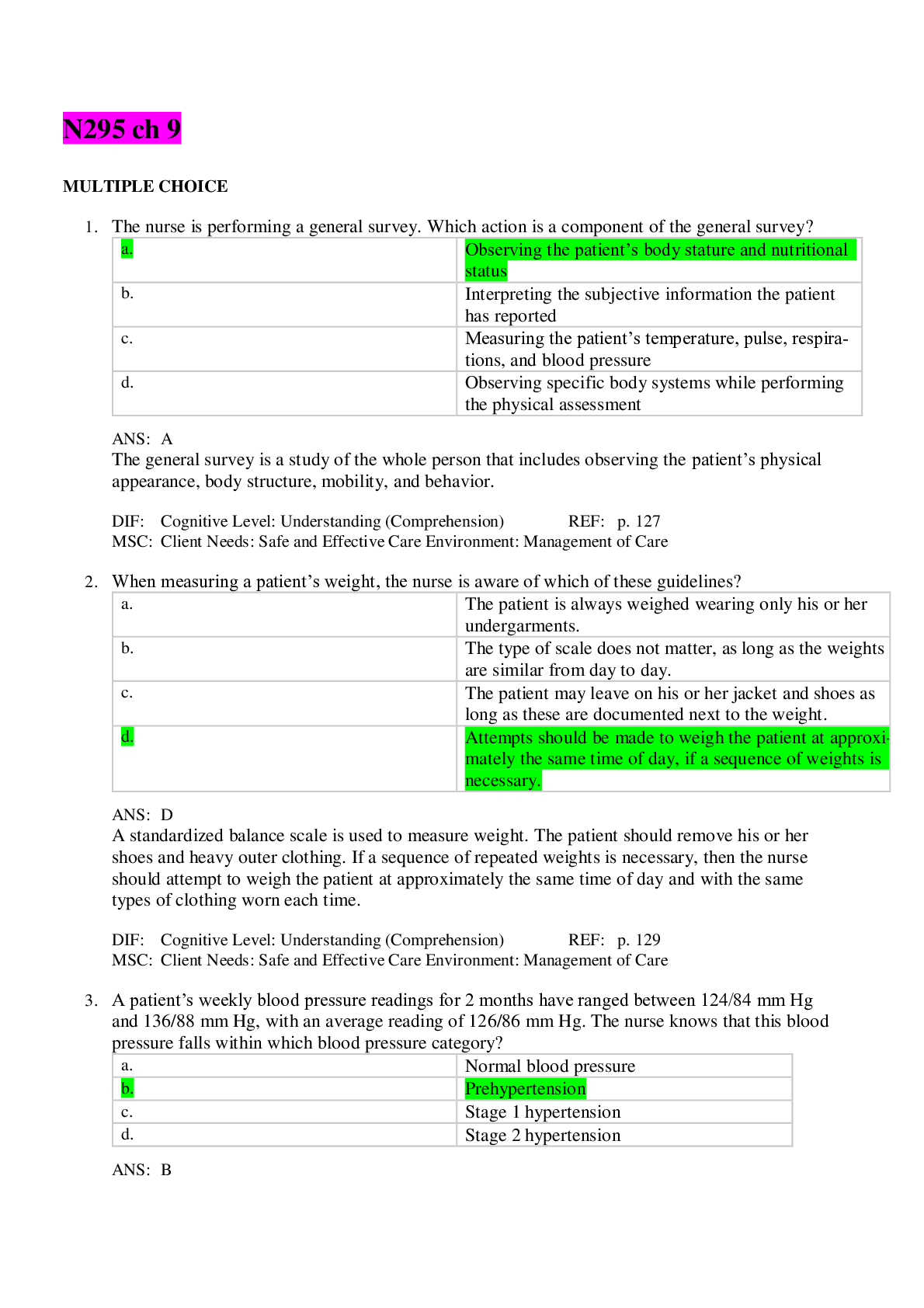
Buy this document to get the full access instantly
Instant Download Access after purchase
Buy NowInstant download
We Accept:

Also available in bundle (1)

CNURSING 295
CHAPTER 23 NEUROLOGIC SYSTEM,CHAPTER 21 ABDOMINAL ASSESSMENT,N295 EXAM 4,N295 EXAM 3,c22,c21,c19,c18,c17,c16,c15,c14,c13,c12,c11,c10,c9,c8,c7,c6,c5,c4,c2,c1
By Ajay25 4 years ago
$75
24
Reviews( 0 )
$15.00
Can't find what you want? Try our AI powered Search
Document information
Connected school, study & course
About the document
Uploaded On
Jan 14, 2021
Number of pages
18
Written in
Additional information
This document has been written for:
Uploaded
Jan 14, 2021
Downloads
0
Views
131

